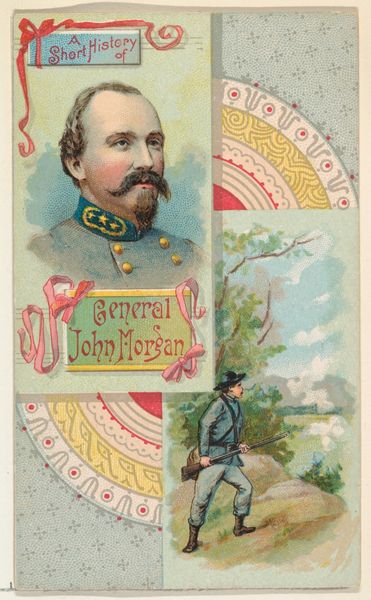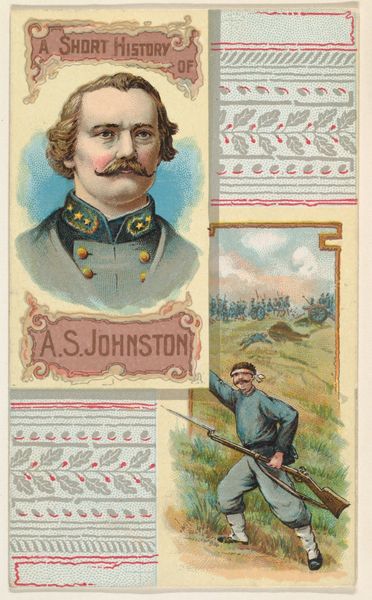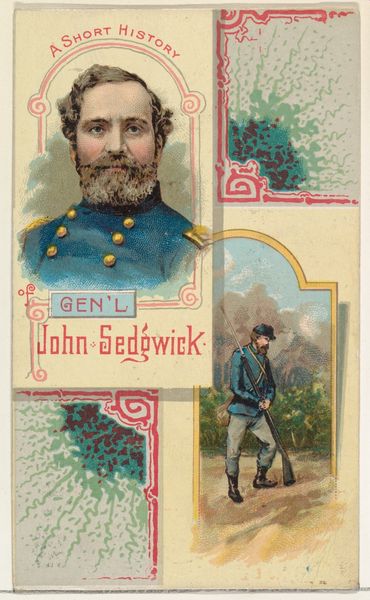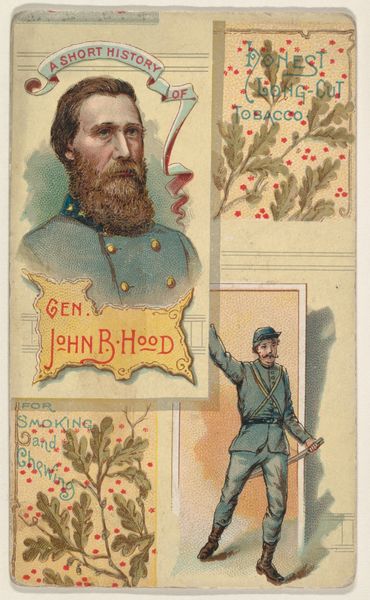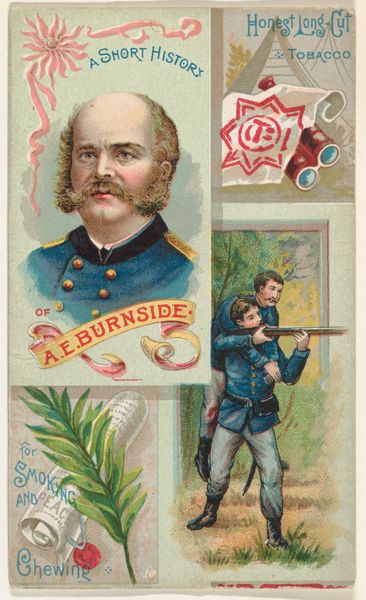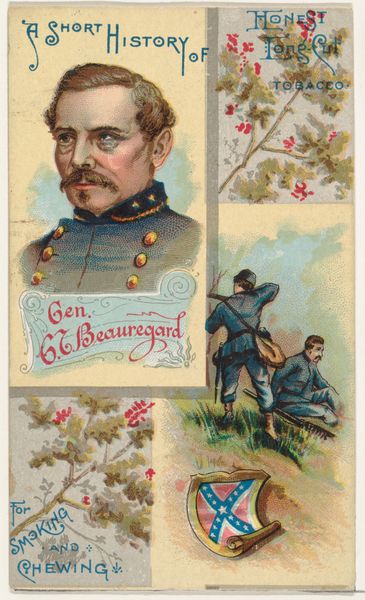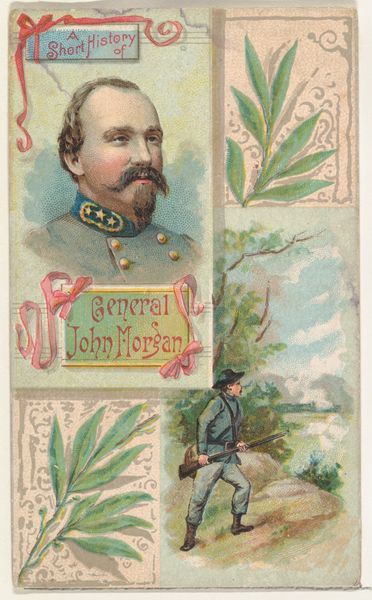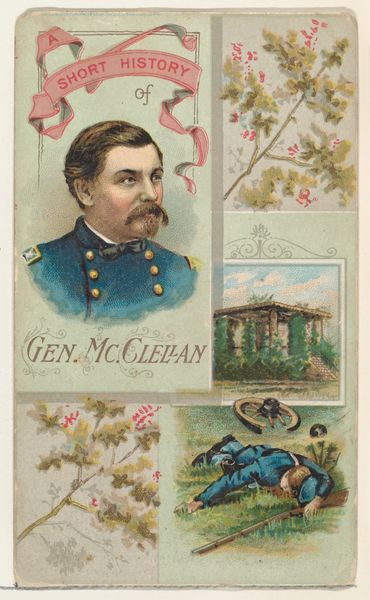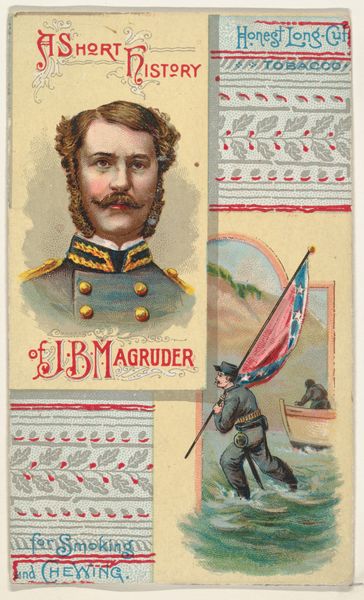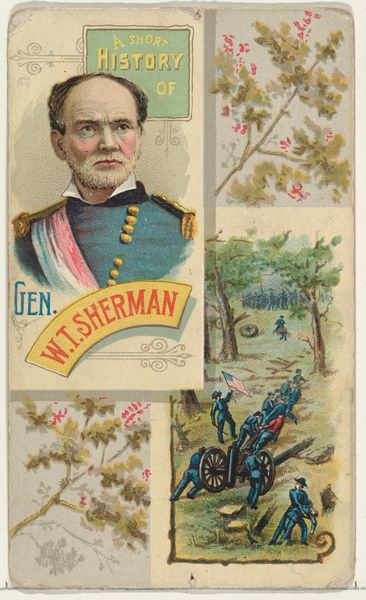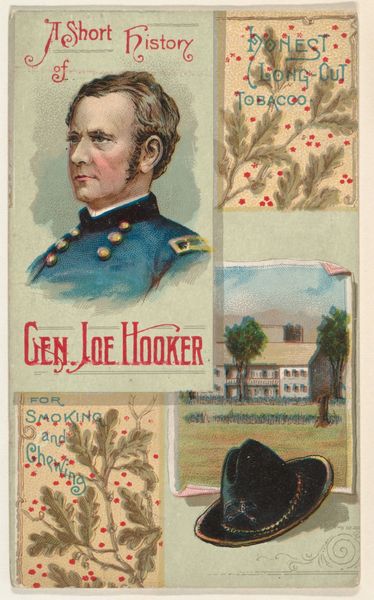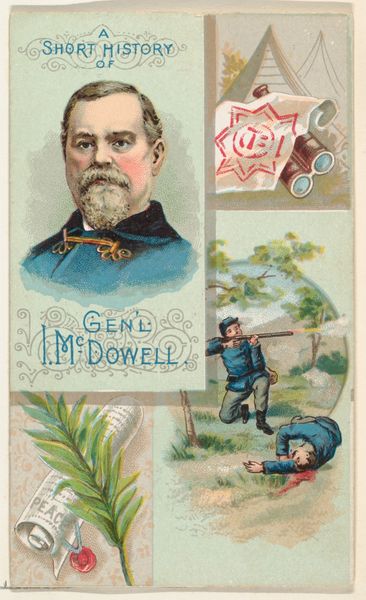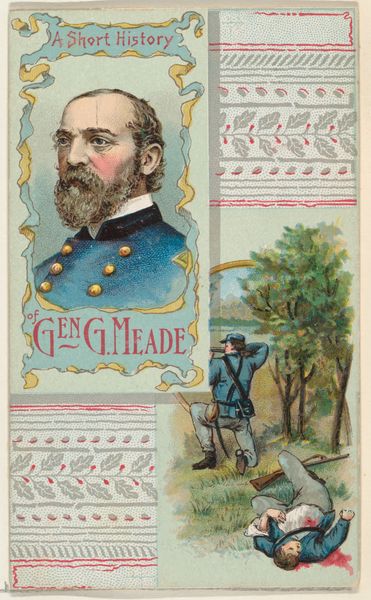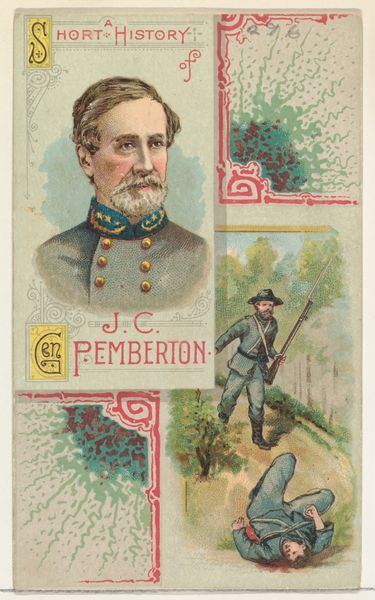
A Short History of General John C. Breckinridge, from the Histories of Generals series (N114) issued by W. Duke, Sons & Co. to promote Honest Long Cut Smoking and Chewing Tobacco 1888
0:00
0:00
drawing, print
#
portrait
#
drawing
#
aged paper
#
toned paper
# print
#
traditional media
#
caricature
#
personal sketchbook
#
coloured pencil
#
men
#
watercolour illustration
#
cartoon carciture
#
sketchbook art
#
watercolor
Dimensions: Sheet: 4 3/16 × 2 1/2 in. (10.7 × 6.4 cm)
Copyright: Public Domain
Curator: Here we have "A Short History of General John C. Breckinridge," a trade card dating back to 1888, from the Histories of Generals series by W. Duke, Sons & Co. currently housed at the Metropolitan Museum of Art. Editor: My initial reaction? It's striking how this small print manages to feel both like a formal portrait and a battlefield scene. The colours, though somewhat faded, possess an inherent intensity that captures the eye. Curator: Indeed. Formally, observe how the composition divides the card into distinct visual compartments, each offering a glimpse into Breckinridge's world, both the man himself, in a classical portrait style, alongside vignettes symbolizing his history and career. Editor: And yet, it’s also about commercial interests and social context. This piece wasn't intended as 'high art'; it served the very practical purpose of advertising tobacco products. Consider the materials – the paper, the printing inks, all relatively cheap and mass-produced. These trade cards flooded the market; ubiquitous pieces tied to labour practices and commodity culture. Curator: True, yet consider the intentionality behind its design. The artist cleverly balances realism in the general's face with a stylized, almost cartoonish quality. The details are carefully considered – the buttons, the subtle gradients of tone and hue that compose his features... Editor: Precisely, that artistic 'intention' occurred under the weight of capitalist demands! We can scrutinize how the workers involved were managed, the type of presses used to manufacture this in thousands; a production assembly unseen when considering ‘traditional’ art! This context shapes its aesthetic as much as the artist’s vision. Curator: Nonetheless, its semiotic resonance is unavoidable. The symbols of military rank, the distant view of troops; these images invoke authority and perhaps a subtle romanticizing of warfare through its pictorial organization. Editor: Seeing this image really forces you to ask 'art for whom?', doesn't it? What are the labour conditions? What is its actual impact? How do promotional works shape our views on historical characters and national pride? Fascinating how it marries propaganda and aesthetic considerations in this format. Curator: Certainly. By examining it closely we begin to unpack layers of meaning that this artifact carries— a portrait, a symbol, a fragment of its historical time—revealing stories about art, war, and social structures. Editor: Ultimately it shows the deep interconnection between the world of making, its marketing purposes, and social impacts far from simple art history appreciations.
Comments
No comments
Be the first to comment and join the conversation on the ultimate creative platform.
